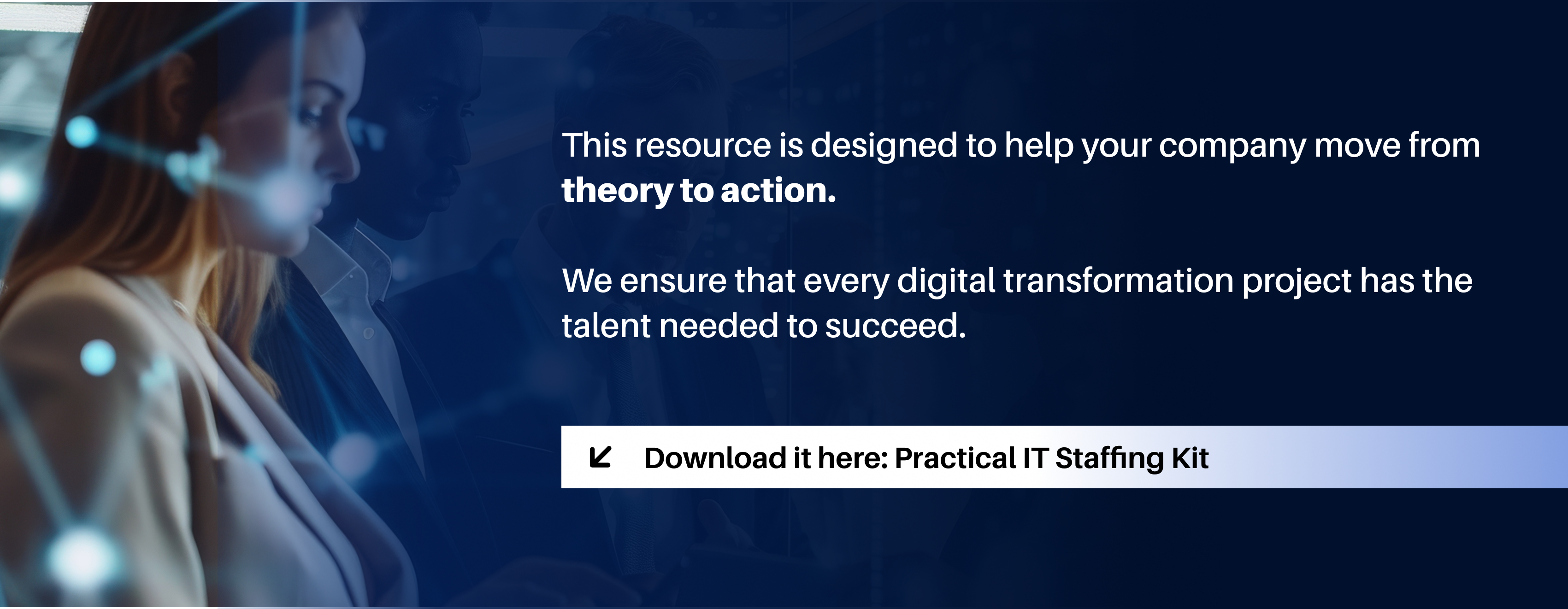The role of IT Staffing in digital transformation projects
Digital transformation doesn't just depend on technology, but on the talent that drives it. IT Staffing has become a key strategy for accelerating projects, reducing risks and ensuring the necessary specialization at each stage of the process. Discover how this modality is helping companies to execute their digital initiatives with agility, flexibility and measurable results - in addition, download a practical kit to apply this strategy in your organization.

Digital transformation has become a strategic imperative for companies. It's no longer just about incorporating new technologies, but about rethinking processes, business models and ways of working. However, no matter how much an organization invests in software, infrastructure, or methodologies, the success of the transformation depends to a large extent on the people who execute it.
In this context, the IT Staffing emerges as a key solution. Far from being only a temporary hiring mechanism, it has established itself as a flexible strategy for attracting, integrating and exploiting specialized talent at the most critical moments of digital projects.
This article explores how IT Staffing contributes to digital transformation, what its benefits are, in which industries it is having the greatest impact and what metrics allow its success to be measured. In addition, you'll find a downloadable resource with practical templates to help you implement this strategy in your organization.
What is IT Staffing and why is it key to digital transformation?
El IT Staffing consists of the incorporation of technology professionals under flexible schemes, either for projects, for hours or for specific periods. Unlike traditional hiring, it allows companies to have highly specialized profiles just when they need them, without having to bear the costs and risks of a permanent employment relationship.
In digital transformation projects, where speed and innovation are critical, IT Staffing becomes an enabler. It allows the organization to:
- Access expert talent without going through lengthy recruitment processes.
- Ensure project continuity even in changing environments.
- Adjust the size and composition of the team as the initiative progresses.
- Optimize costs by paying only for the time or phase in which a profile is required.
In a nutshell, Staffing IT offers agility, specialization and flexibility, three essential ingredients for any digital transformation process.
Specific contributions of IT Staffing to digital transformation
Beyond being a flexible hiring scheme, Staffing IT provides strategic value in very specific areas:
- Immediate specialization
Digital initiatives often require experts in cybersecurity, data analytics, cloud architectures, system integration, or user experience. These profiles are not always available in the internal workforce and can take months to search the market. With Staffing IT, you have access to specialists ready to join the project.
- Reducing risks
A common mistake in digital transformation is assigning internal staff without adequate experience in new technologies. This causes failures, delays and cost overruns. IT Staffing reduces this risk by ensuring that projects are supported by professionals with the learning curve already overcome.
- Knowledge transfer
Consultants don't just execute, they also train and accompany the internal team. In this way, the company does not depend eternally on external resources, but rather increases the maturity of its talent in the process.
- Project scalability
In critical phases, such as the migration to a new ERP or the deployment of an app, a greater number of specialists are needed. Once that phase is over, the equipment can be reduced without liquidation or restructuring costs.
- Accelerating time-to-market
By having specialists from the start, delays in the delivery of digital products are avoided, allowing the company to respond faster to the market.
Use cases by industry
IT Staffing adapts to different contexts, but in some industries its value becomes even more evident:
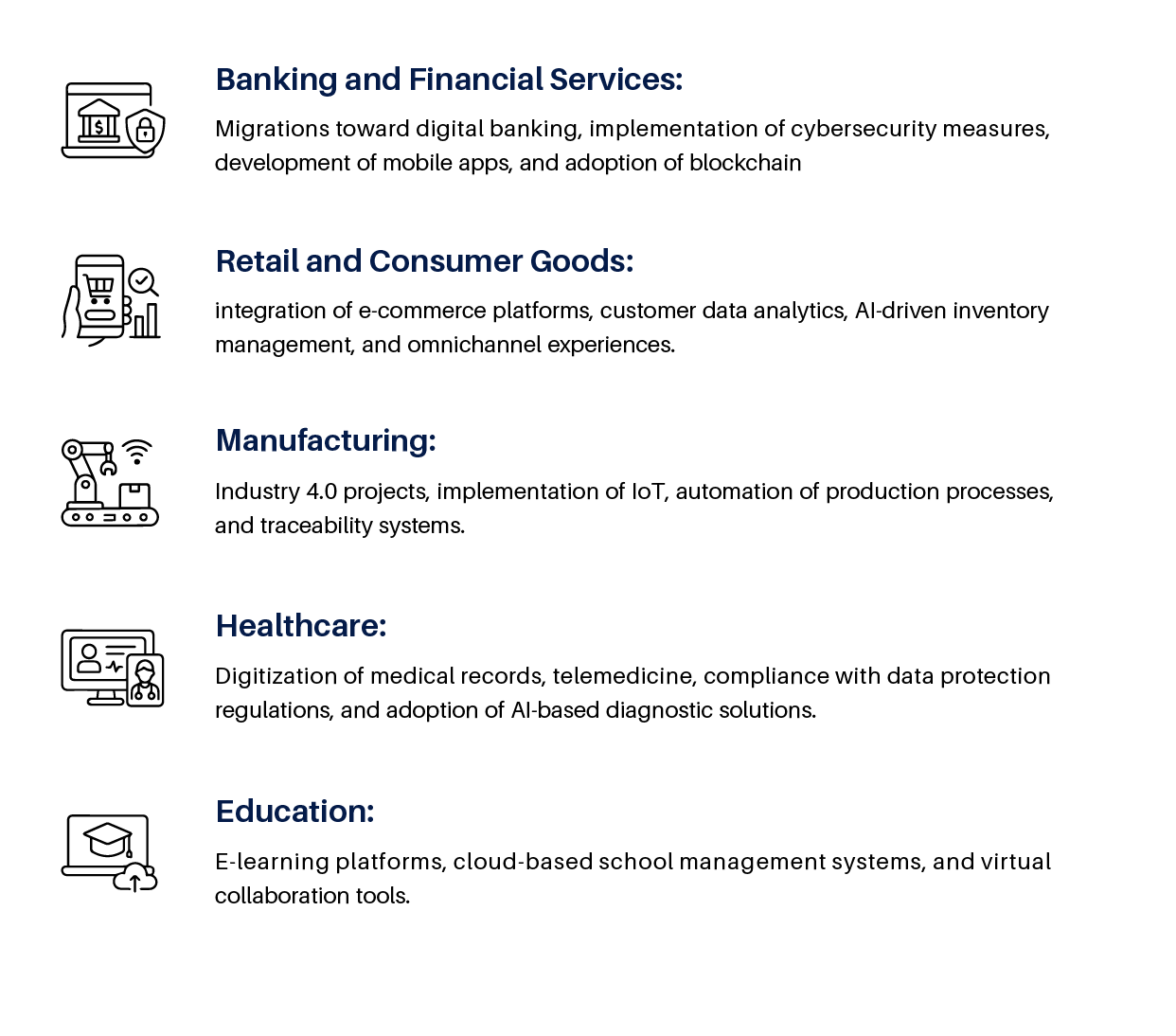
- In all these cases, IT Staffing has proven to be the bridge between the vision of transformation and its technical execution.
Risks of not having Staffing IT
Ignoring the value of IT Staffing in digital projects can have costly consequences:
- Long delays due to lack of experience in new technologies.
- Cost overruns resulting from the hasty recruitment and training of internal staff.
- Unfinished projects who are left halfway through the lack of key specialists.
- Wear and tear on internal equipment, who must take on responsibilities for which he is not prepared.
- Loss of competitiveness, not being able to respond quickly to market changes.
In short: trying to execute a digital transformation without the right talent is like building a skyscraper without specialized architects or engineers.
Best Practices for Integrating Staffing IT
To get the most out of this strategy, it's essential to follow some good practices:
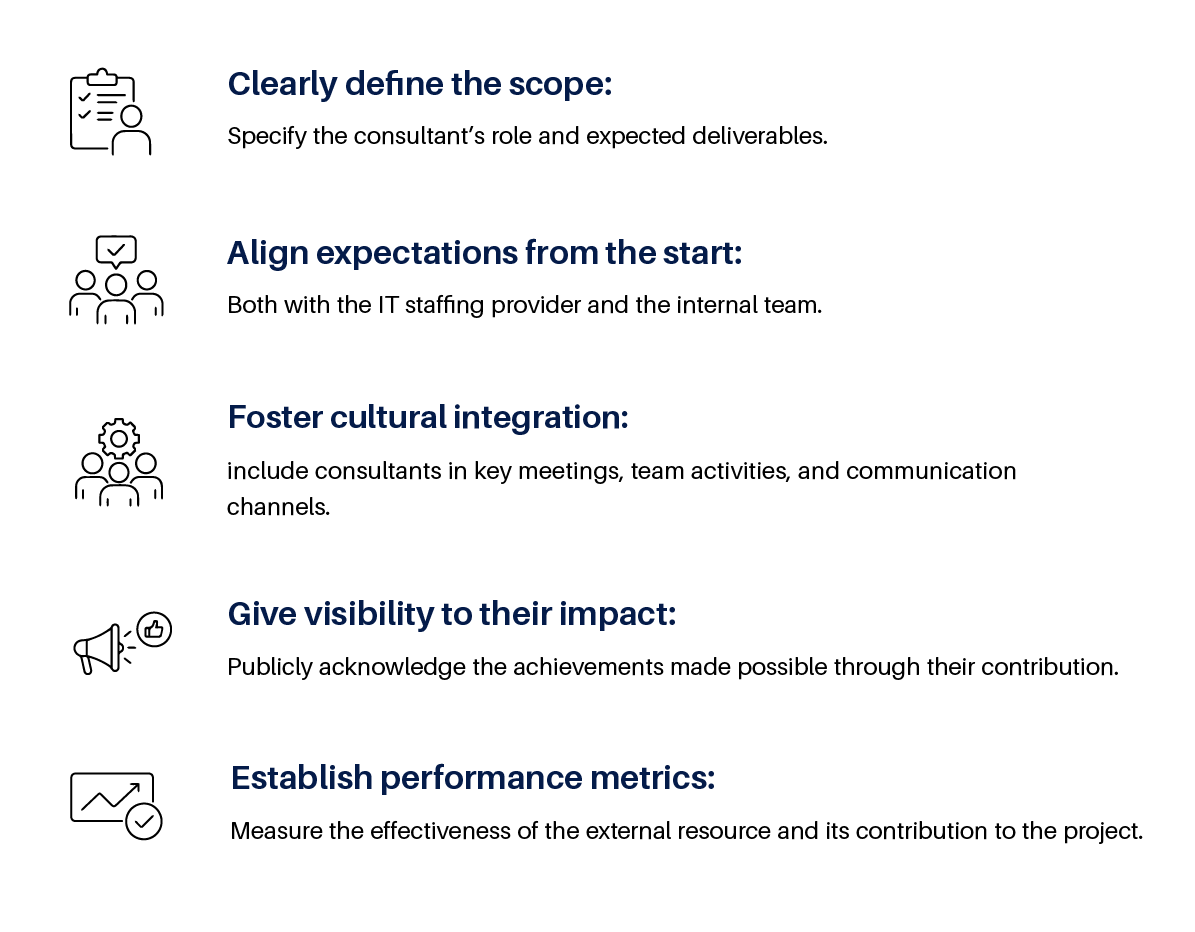
- These practices avoid the perception that external talent is “isolated” and allow their contribution to be seen as part of collective achievement.
Frequently Asked Questions about IT Staffing in Digital Transformation
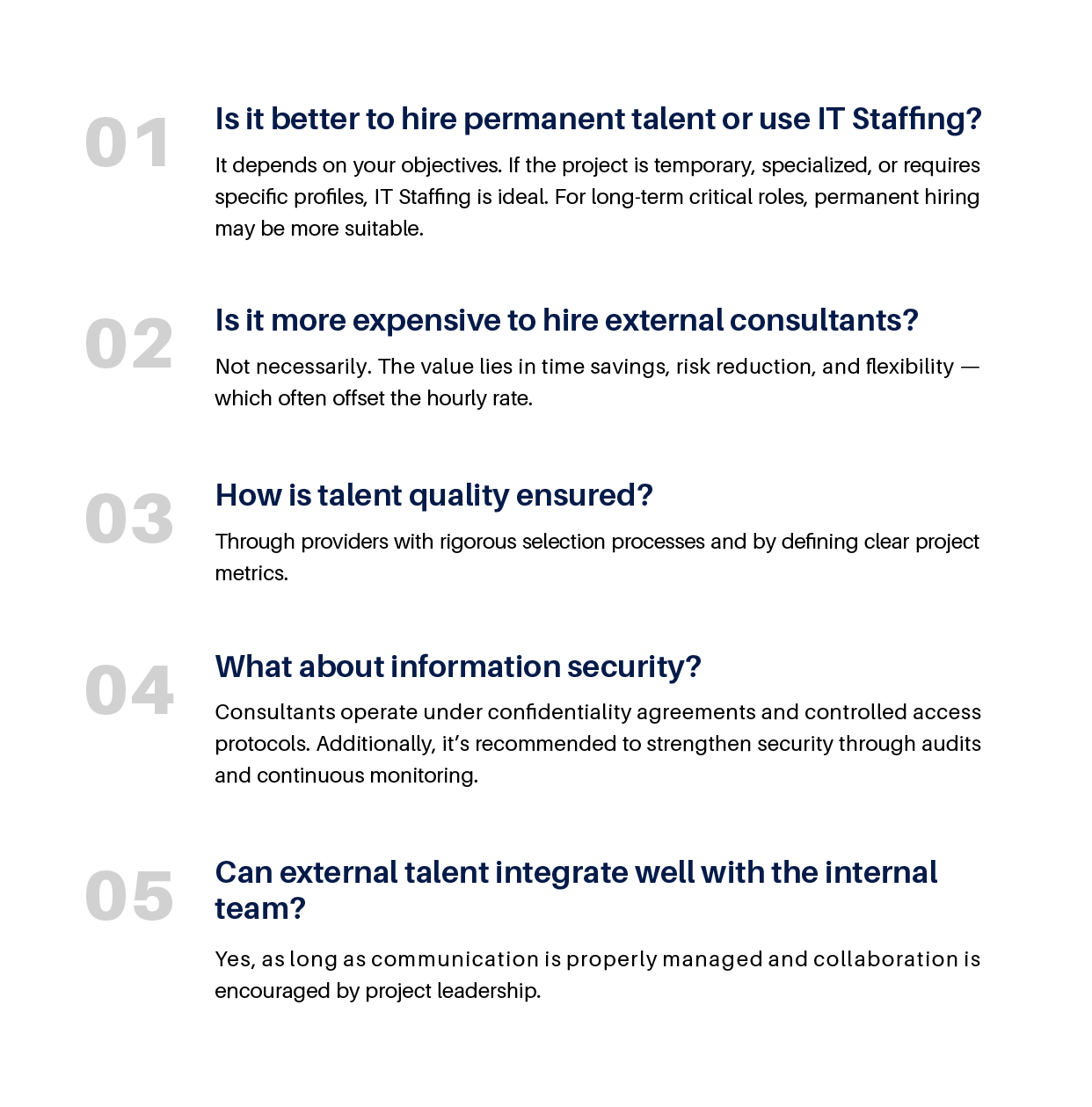
Metrics to evaluate the success of IT Staffing
The implementation of Staffing IT must be evaluated with clear indicators. Some key metrics include:
- Integration time: how long it takes for new resources to provide value.
- Meeting project milestones: measure real progress against planned progress.
- Deliverable quality: evaluate errors or rework in configurations and developments.
- Cost savings: compare with the estimated cost of internal recruitment.
- Team Satisfaction: measure the perception of employees regarding integration with consultants.
- Knowledge transfer: determine how much learning was left in the internal team after external participation.
These metrics not only justify the investment, but they also help to optimize future digital transformation projects.
Trends for the future of IT Staffing
IT Staffing also evolves as the digital world evolves. Some key trends are
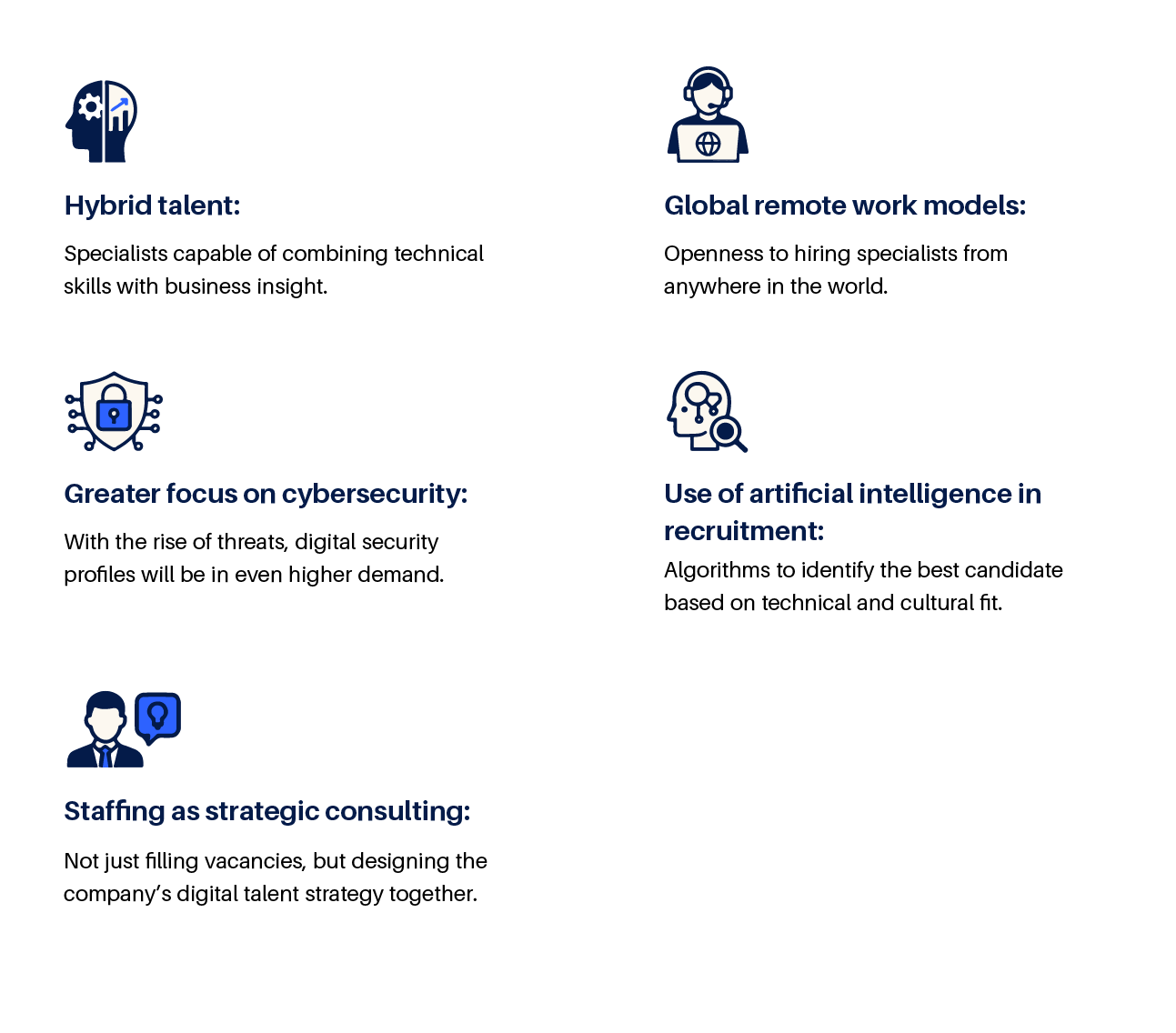
- These trends show that IT Staffing will no longer be just a “tactical solution” to become a structural component of digital strategy.
Conclusion
Digital transformation requires speed, innovation and highly specialized talent. IT Staffing is positioned as the ideal ally to bridge the gap between project needs and the availability of professionals in the labor market.
It's not just about filling temporary positions, but about accelerate results, reduce risks and transfer knowledge within the organization.
Correctly measuring their impact, integrating good practices and anticipating trends will allow companies to make the most of this strategy in the present and in the future.
Downloadable Resource: Staffing IT Practical Kit
To help you implement this strategy in your organization, we have prepared a free downloadable kit which includes:
Quick survey to detect digital talent needs.
Integration plan template for new resources.
Metrics checklist to evaluate the success of Staffing IT.
Good practice guide to promote collaboration between internal and external talent.
